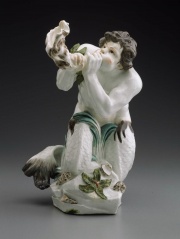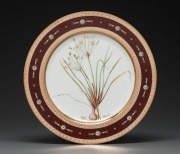Hard paste porcelain
Jump to navigation
Jump to search
Description
True, translucent Porcelain which has been fired at temperatures of about 1400C. Hard paste porcelain is composed of kaolin, Feldspar, Quartz, and/or Flint. Hard paste porcelains were made in China and Japan in the 5th century CE from naturally occurring mixtures of clay. The first man-made mixture of hard paste was developed in Meissen, Germany in 1710. Soft paste porcelains are fired at lower temperatures.
Synonyms and Related Terms
pate dure; hard-paste; hardpaste; porcelaine à pâte dure (Fr.); porcelana de pasta dura (Port.)
Sources Checked for Data in Record
- Henry Hodges, Artifacts: An Introduction to Early Materials and Technology, Ronald P. Frye, Kingston, Canada, 1988
- Robert Fournier, Illustrated Dictionary of Practical Pottery, Chilton Book Company, Radnor, PA, 1992
- The Dictionary of Art, Grove's Dictionaries Inc., New York, 1996 Comment: "Ceramics";
- Ralph Mayer, A Dictionary of Art Terms and Techniques, Harper and Row Publishers, New York, 1969 (also 1945 printing)
- Random House, Webster's Encyclopedic Unabridged Dictionary of the English Language, Grammercy Book, New York, 1997
- Art and Architecture Thesaurus Online, http://www.getty.edu/research/tools/vocabulary/aat/, J. Paul Getty Trust, Los Angeles, 2000

